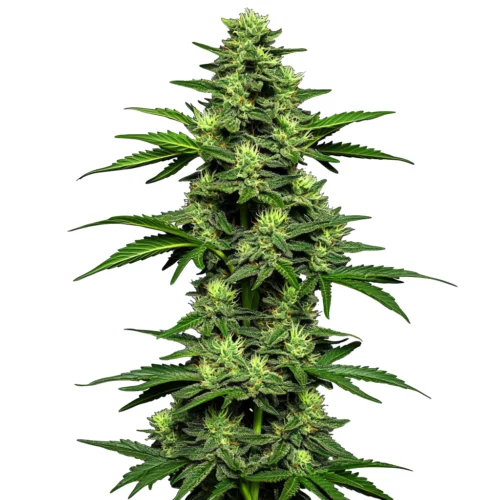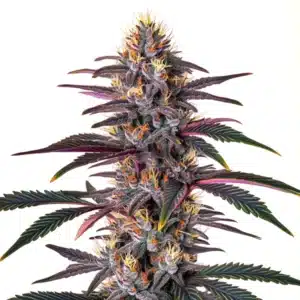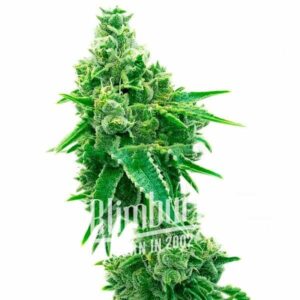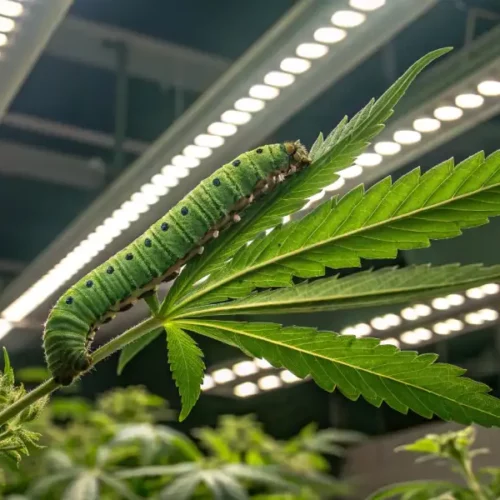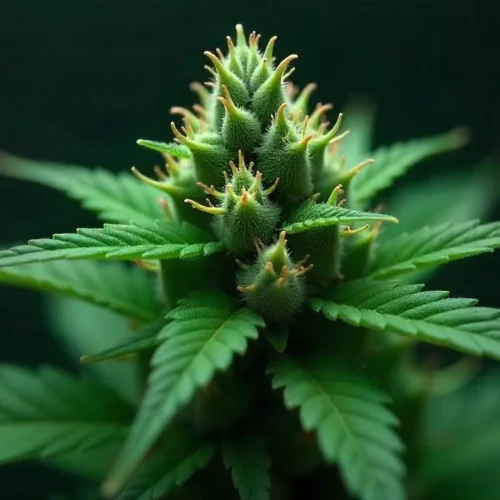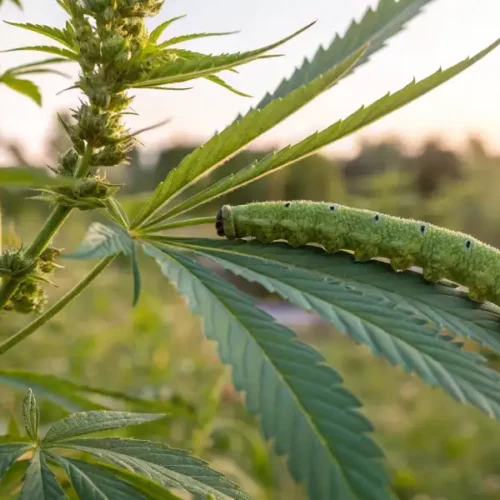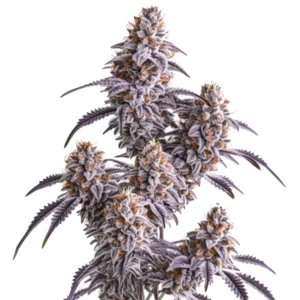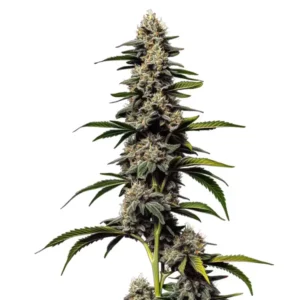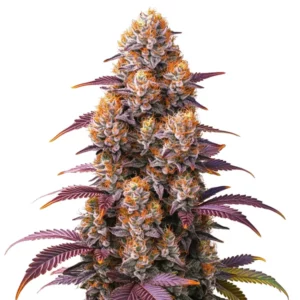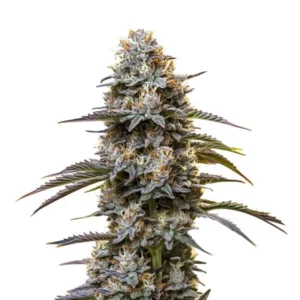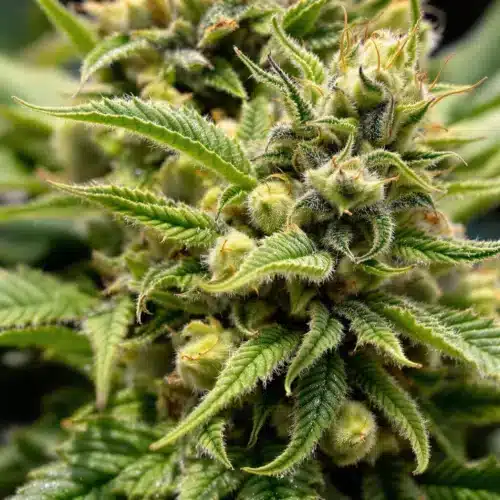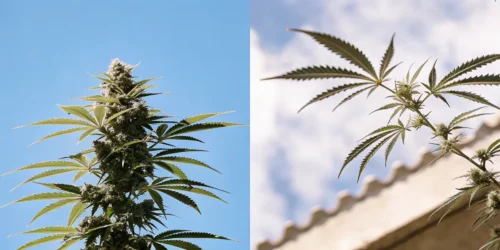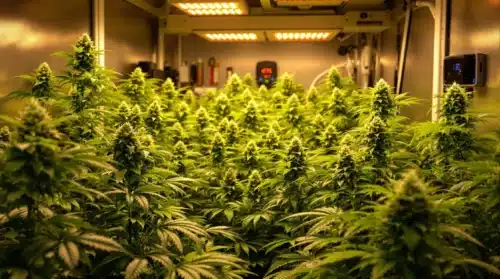Cannabis hermaphroditism occurs when a plant produces both male and female reproductive structures, often as a result of environmental stress or inherited traits. Factors like light interruptions, temperature swings, or physical damage can prompt the plant to grow male pollen sacs in a survival-driven attempt to self-pollinate. Additionally, certain cannabis strains carry a stronger genetic tendency toward becoming hermaphroditic.
At Blimburn, we have been creating, conserving, and developing cannabis strains for over 20 years. Our commitment to quality is reflected in the rigorous controls our strains undergo before being made available to growers. While we strive to minimize the risk of Hermaphrodite Cannabis, understanding how to stress a plant to make seeds is crucial, as it’s a complex issue influenced by both genetic and environmental factors. Managing these factors is essential, as it can significantly reduce the likelihood of hermaphroditism in cannabis crops. However, it’s also important to note that complete avoidance of hermaphroditism cannot be guaranteed.
Recommended Strains
OG Kush
 THC: 20% - 24%
THC: 20% - 24% Type of seed: Feminized
Type of seed: Feminized Phenotype: Mostly Indica
Phenotype: Mostly Indica Day to flower: 8 - 10 weeks
Day to flower: 8 - 10 weeks
OG Kush Auto
 THC: 17 - 24
THC: 17 - 24 Type of seed: Autoflowering
Type of seed: Autoflowering Phenotype: Mostly Hybrid
Phenotype: Mostly Hybrid Day to flower: 8 - 10 weeks
Day to flower: 8 - 10 weeks
We appreciate the insights from our growing community, which help us maintain greater control over our strains. Contributions like pictures of hermaphrodite plants are especially valuable, as they enhance our ability to identify and address genetic issues early. As a token of our gratitude, we offer rewards, such as seeds, for valuable contributions to our knowledge base.
Main Causes of Hermaphroditism in Cannabis:
- Environmental stress: Knowing how to stress a plant to make seeds can shed light on why cannabis plants are sensitive to environmental changes, such as temperature fluctuations, changes in light intensity, and extreme weather conditions. This type of stress can lead the plant to develop male flowers, trying to ensure its survival by increasing the chances of reproduction.
- Physical Damage: Injuries or physical damage to the plant can also trigger the formation of male flowers. This includes cuts, abrasions, or any type of trauma that may cause the plant to produce male flowers as a survival response.
- Nutrient Imbalance: An imbalance in essential nutrients, whether it’s an excess or deficiency, can influence the development of male flowers. Improper nutrient management can alter the plant’s hormonal balance, leading to hermaphroditism.
- Interrupted Light Cycle: Interruptions in the light cycle during the flowering phase, such as exposure to light during supposed darkness, can induce the formation of male flowers. Maintaining a consistent light cycle is critical to avoid this problem.
- Genetics: Some strains are genetically more predisposed to hermaphroditism. If a plant is grown from a strain with a genetic predisposition to develop both male and female flowers, this trait is more likely to manifest.
The world of cannabis cultivation is as complex as it is fascinating, with growers constantly adapting to the nuances of plant genetics and environmental factors. Among these complexities lies a peculiar phenomenon – the existence of hermaphrodite cannabis plants.
Hermaphroditism in cannabis is a natural genetic occurrence, but it often catches many cultivators off guard. These unique plants is not just about identifying them; it’s about comprehending the implications they have on cultivation and breeding practices. As we explore this topic, we’ll uncover the signs of hermaphroditism, learn how to identify these plants, and discuss the best practices for managing them in your grow space.
Promos & Deals
Hermaphroditism in Cannabis
Hermaphroditism in cannabis refers to a plant developing both male and female reproductive organs, a phenomenon often influenced by how to stress a plant to make seeds. This is a rare and fascinating phenomenon in the plant kingdom, where most species are typically either male or female. In cannabis, hermaphrodite plants can produce both pollen and ovules, making them capable of self-pollination. This trait, while biologically interesting, can pose significant challenges for cultivators aiming for high-quality and consistent yields.
Knowing the genetic and environmental factors that contribute to hermaphroditism is crucial for growers. It allows them to select strains wisely—such as OG Kush by Blimburn Seeds, known for its stability—and create optimal growing conditions to minimize the risk of developing hermaphrodite plants. This knowledge goes beyond preventing potential crop issues; it’s about using insights into cannabis biology to enhance cultivation practices overall.

Identifying Hermaphrodite Cannabis Plants
Identifying hermaphrodite cannabis plants is a critical skill for any cultivator. These plants can be subtle in their presentation, making early detection a challenge. The key to identification lies in recognizing the distinct characteristics of male, female, and hermaphroditic cannabis plants. Typically, male plants develop pollen sacs, while female plants produce pistillate flowers (calyxes with pistils). Hermaphrodite plants, however, will exhibit both of these features.
Visual inspection is the primary method for identifying hermaphrodite cannabis plants. Growers should look for small, banana-shaped structures, known as anthers or “bananas,” which are indicative of male pollen sacs on a plant that otherwise shows female characteristics. These anthers often emerge from what appears to be a regular female flower, making careful observation crucial. It’s important to inspect plants regularly, especially during the early flowering stage when these traits are most likely to appear.
Another important aspect of identification is recognizing the two types of hermaphroditism in cannabis: “true hermaphrodites” and “mixed-sex hermaphrodites.” True hermaphrodites produce distinct male and female flowers on the same plant, while mixed-sex hermaphrodites may show male and female characteristics on different parts of the plant. Recognizing these differences helps in making informed decisions about managing or removing these plants from the grow area to prevent unwanted pollination.
Early Signs of Hermaphrodite Cannabis
Identifying the early signs of hermaphrodite cannabis is crucial for any grower, as early detection can significantly mitigate the impact on your crop. The earliest signs usually manifest during the flowering stage. Vigilance during this phase can mean the difference between a successful harvest and one compromised by unintentional pollination.
One of the earliest indicators of a potential hermaphrodite plant is the appearance of both pistils and pollen sacs, although they may not be fully developed. In some cases, these may appear near the plant’s nodes – the points where the branches meet the stem. Growers should also be on the lookout for staminate flowers (male flowers) emerging amidst the pistillate flowers (female flowers), which is a clear sign of hermaphroditism.
Another early sign can be subtle changes in plant morphology. Hermaphrodite plants may exhibit growth patterns that are atypical when compared to their purely female counterparts. This could include unusual leaf formation, irregular branching, or the development of ambiguous sexual organs. While these signs are not definitive indicators of hermaphroditism on their own, in combination with other symptoms, they can serve as valuable early warning signs.

Cannabis Hermaphrodite Preflowers: What to Look For
The preflowers of a cannabis plant can provide early clues to hermaphroditism. These small, embryonic flowers develop at the nodes of the plant and can reveal the plant’s sex before it enters the full flowering stage. In hermaphrodite cannabis plants, these preflowers may display characteristics of both male and female flowers.
In male plants, preflowers appear as small, round balls on short stalks, which are actually immature pollen sacs. Female preflowers, on the other hand, are shaped like tear drops and feature a pair of white hairs, or pistils, protruding from the top. In hermaphrodite plants, growers might observe both these structures in the preflowers, which is a tell-tale sign of the plant’s dual-sex nature.
Careful inspection of preflowers requires a magnifying glass or a jeweler’s loupe. Growers need to look closely at the nodes, especially in plants that have been exposed to stressors. Identifying hermaphrodite preflowers early allows growers to make informed decisions about whether to isolate, remove, or monitor these plants, thus protecting the integrity of their crop.
Genetic and Environmental Factors Leading to Hermaphroditism
The genetic and environmental factors leading to hermaphroditism in cannabis is essential for effective cultivation. Genetically, some cannabis strains are inherently more prone to developing hermaphroditic traits, particularly under stress. These genetic predispositions are crucial for growers to consider when selecting strains for cultivation.
Environmental stress is a major factor in inducing hermaphroditism. Extreme fluctuations in temperature, inadequate or inconsistent lighting, mechanical damage, nutrient imbalances, and even overwatering can stress the plant, leading it to develop both male and female reproductive organs as a survival mechanism. This is the plant’s way of ensuring its lineage continues, even in unfavorable conditions.
Mitigating these stress factors is key to preventing hermaphroditism. This includes maintaining a stable and controlled growing environment, careful handling of plants, balanced nutrition, and proper watering practices. Growers should also be mindful of their cultivation techniques, such as training and pruning, to minimize stress on the plants. By effectively managing genetic and environmental factors, growers can greatly reduce the chances of hermaphroditism in their cannabis crops.
Additionally, planting cannabis too closely together can increase stress due to poor air circulation and excessive humidity. Plants should ideally be spaced around 2 meters apart. This setup not only improves airflow but also helps growers detect early signs of seed formation and act quickly to remove hermaphrodite specimens before they pollinate others.
Growing multiple strains in the same area can also contribute to hermaphroditism. When all neighboring plants are female, some may naturally shift to a dual-sex state in an effort to preserve the species through self-reproduction. Proper spatial and genetic planning can help reduce this risk.
Sudden temperature drops between day and night, especially in spring, can also trigger hermaphroditic tendencies. If the temperature difference exceeds 15°C, the plant may react defensively, developing male flowers as part of its survival instinct.
Implications of Hermaphrodite Plants in Cannabis Cultivation
The presence of hermaphrodite plants in a cannabis grow can have significant implications. The primary concern is the risk of these plants pollinating female plants, leading to a crop laden with seeds. This not only diminishes the quality and potency of the harvest but also reduces the overall yield. In a market that values seedless, high-quality buds, any level of pollination can be detrimental to the grower’s efforts.
Beyond the immediate impact on yield and quality, hermaphrodite plants can also influence future generations of cannabis. Seeds produced from a hermaphroditic pollination are more likely to inherit the hermaphroditic trait, posing challenges for breeders and cultivators who are striving to maintain genetic purity and stability in their strains. This makes the identification and isolation of hermaphrodite plants an essential practice for sustainable cannabis cultivation.
Furthermore, the management of hermaphrodite plants requires additional labor and vigilance. Growers need to spend extra time inspecting their plants, especially during the flowering phase, to identify and remove or isolate any hermaphrodites. This increased labor can lead to higher costs and more complex cultivation processes, especially for larger operations.
Although hermaphrodite plants are often removed, some growers choose to continue cultivating them under controlled conditions. Seeds from these plants will generally be feminized and can produce unique F1 genetics not found elsewhere. This can be an opportunity for experimental breeders to create exclusive lines within their own grow setups.
Managing Hermaphrodite Cannabis in Cultivation
Effective management of hermaphrodite cannabis plants is key to maintaining the integrity of a cannabis grow. The first step is regular and thorough inspection of plants, particularly during the early flowering stage when hermaphroditic traits are most likely to manifest. Growers should be well-versed in identifying the signs of hermaphroditism to take prompt action.
Once a hermaphrodite plant is identified, the grower must decide whether to remove or isolate it. Removal is often the safest option to prevent any risk of pollination. However, in some cases, especially with rare or valuable genetics, growers may choose to isolate the plant. This involves placing it in a separate area where it cannot pollinate female plants, allowing the grower to harvest its seeds or use it for breeding purposes under controlled conditions.
Additionally, implementing preventive measures can be highly effective. This includes maintaining a stable growing environment, using reliable genetics, and understanding how to stress a plant to make seeds while minimizing stress through careful cultivation practices. By taking these steps, growers can significantly reduce the likelihood of hermaphroditism in their cannabis crops.
Cannabis Hermaphrodite Seeds: Characteristics and Cultivation
Cannabis hermaphrodite seeds possess unique characteristics and present both opportunities and challenges in cultivation. These seeds are a result of self-pollination or pollination from another hermaphrodite plant, and they often carry the hermaphroditic trait. This means that plants grown from these seeds have a higher likelihood of becoming hermaphrodites themselves, which can be a concern for cultivators aiming for sinsemilla (seedless) buds.
However, hermaphrodite seeds can also be of interest to breeders and researchers. They can be used in breeding programs to study hermaphroditism and to develop new strains with specific traits. For growers interested in cultivating these seeds, it’s important to monitor the plants closely and be prepared for a higher incidence of hermaphroditism.
Cultivating autoflower hermaphrodite cannabis seeds requires vigilance. Growers should provide a stable and stress-free environment to minimize the expression of hermaphroditic traits. Regular inspection of the plants for signs of hermaphroditism is crucial, and any hermaphrodite plants should be managed according to the grower’s objectives and the considerations mentioned previously.
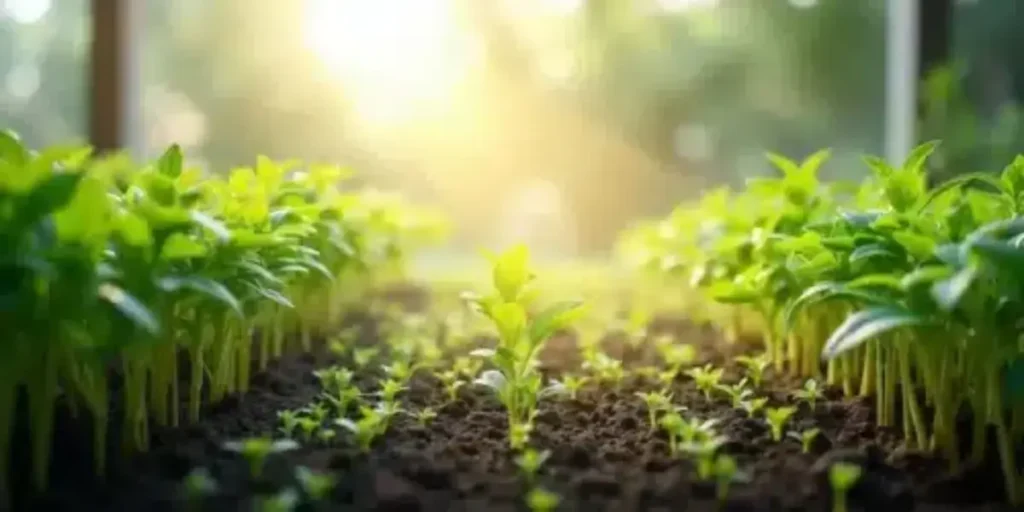
Expert Tips for Preventing Hermaphroditism in Cannabis Plants
Preventing hermaphroditism in cannabis cultivation is a combination of careful strain selection, environmental control, and stress management. Experienced growers recommend starting with genetically stable strains known for their pure female lineage. This reduces the risk of genetic predisposition towards hermaphroditism.
Environmental control is another critical factor. Cannabis plants are sensitive to their growing conditions, and stress from factors such as light leaks, temperature fluctuations, or improper watering can trigger hermaphroditic tendencies. Maintaining a consistent and controlled environment, especially during the flowering phase, is essential. This includes consistent light cycles, optimal temperature and humidity levels, and a nutrient-rich, balanced feeding regimen.
Stress management extends to handling and training techniques. High-stress training methods, if not done correctly, can stress the plant and increase the likelihood of hermaphroditism. Gentle handling, appropriate training techniques, and avoiding physical damage to the plants are key practices to prevent stress-induced hermaphroditism.
Lastly, remember that hermaphroditism is a natural phenomenon. If detected early, it can be managed by simply removing the affected seeds or isolating the plant. Early vigilance and proper spacing are your best tools for minimizing risks without sacrificing potential.
FAQs
What causes hermaphroditism in cannabis plants?
Hermaphroditism in cannabis is primarily caused by a combination of genetic predisposition and environmental stress. Factors such as temperature fluctuations, light cycle interruptions, nutrient imbalances, physical damage, and overcrowding can all trigger a plant to develop both male and female reproductive organs. Some strains are also naturally more prone to this phenomenon, making strain selection and stress management critical in cannabis cultivation.
How can I prevent my cannabis plants from becoming hermaphrodites?
To prevent hermaphroditism, start with genetically stable strains and create a controlled growing environment. This includes maintaining consistent temperature and humidity levels, avoiding light leaks during the flowering stage, and ensuring proper nutrition and plant spacing. Minimizing plant stress through gentle training techniques and regular inspections can also reduce the risk of hermaphroditic traits.
Should I remove a hermaphrodite cannabis plant from my grow room?
Yes, removing a hermaphrodite plant is often the safest choice to prevent unwanted pollination and protect the quality of your harvest. However, some experienced growers choose to isolate these plants for controlled breeding purposes. If you keep a hermaphrodite, make sure it’s completely separated from female plants and monitor it closely to avoid compromising the rest of your crop.


